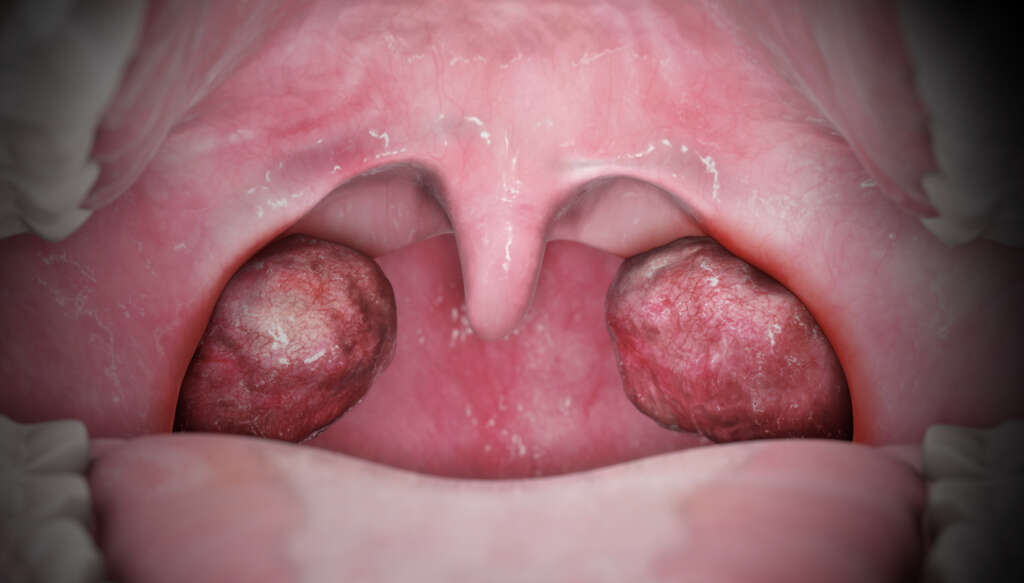What Is Tonsilitis?
There are countless different diseases in the world, and some are more common than others. Some are so common that pretty much everybody is aware of them, and has likely even had the disease themselves. One such disease is tonsillitis, and it is very common among children especially.
It used to be almost standard procedure for people to have their tonsils removed. However, this practice is much less common because of the function of the tonsils, concerns of the use of antibiotics, and the discomfort it can cause. Tonsillitis remains a fairly common condition, and here’s more information on what it is and how it can affect us.
1. The Tonsils
Our tonsils are part of our lymphatic system. This means that they help to keep us safe from disease. They do this by helping to trap pathogens in the mouth where they can then be dealt with. This helps prevent pathogens from reaching deeper parts of the body where they might cause us harm.
The tonsils are located at the back of the mouth, with one on which side. We don’t usually notice they are even there at all. That is, of course, until something goes wrong with them. One thing that can go wrong is tonsillitis, and it is a condition that is usually very noticeable indeed.
2. Tonsillitis
Tonsillitis is the medical term given for the inflammation of the tonsils. It is a fairly common condition and many people will have caught it at some point in their lives. This usually happens when people are quite young. It can be a very painful condition, especially in young children, but it is not usually dangerous.
Tonsillitis is usually caused by an infection of sorts; usually by a virus, but not always. The condition is usually quite easy to diagnose because some of its symptoms are easy to spot with the naked eye. Treating the condition is also usually fairly straight forward and the vast majority of patients can expect to make a full recovery.

3. Causes
As mentioned, tonsillitis is usually caused by an infection of sorts. The most common bacterial culprit is the group A streptococcus bacterium, which causes strep throat. Strep throat in itself is not necessarily dangerous, but it can develop into scarlet fever and/or rheumatic fever so it should be treated accordingly.
The tonsils are particularly prone to infection because they are at the front line of defense, dealing with threats that come into the mouth. As we get older, however, the tonsils are given less responsibility in terms of fighting off disease. This would explain why tonsillitis tends not to occur in adults.
4. Sore Throat
Perhaps the most telling of all symptoms of tonsillitis is a sore throat. Tonsillitis is renowned for making the throat very sore indeed and it can make it difficult for the patient to swallow. It can also cause the patient to develop a scratchy voice, or speak with a muffled tone.
The condition is often easily recognizable thanks to the way it causes the tonsils to become red and swollen. This can, in turn, make the patient reluctant to eat, and it may be necessary for them to be given liquid foods such as soup. In addition, there will also often be white or yellow patches on the tonsils.

5. Fever
When an infection of the tonsils is present, the body will react in much the same way it will to any other type of infection. This means that, in many cases, the patient will develop a fever as the immune system tries to make the body a difficult place for pathogen to survive.
The lymph nodes will also become swollen as they will be working harder than usual to help deal with the intruders. The glands closest to the infection will be affected the most, meaning those that are located in the neck. The increased presence of bacteria in the mouth can also lead to the patient developing bad breath.
6. Stiff Neck
The pathogens responsible for tonsillitis can also sometimes infect other parts of the body, and it’s those close by that are affected first. This means that the protective barrier lining the central nervous system can also become infected. This barrier is known as the meninges, and inflammation of this tissue is known as meningitis.
This will usually result in a stiff neck and is a sign that the tonsillitis is progressing. If the patient has not received medical attention by this stage then they should do as soon as possible. Other symptoms that can be caused by tonsillitis include a headache and a stomach ache. The latter usually occurs only in young children.

7. Young Children Symptoms
Tonsillitis tends to affect the young, including those that are too young to talk. This makes it difficult to know what is wrong with them, but there are some signs to look out for. If your child appears to be more fussy than usual, for example, it is a sign that they might be ill and in need of closer attention.
You might also notice that your child is off their food and finding it difficult to swallow. A loss of appetite is something that should always grab your attention. You might also notice that your child is drooling and this should also grab your attention.
8. Risk Factors
Pretty much anybody can catch tonsillitis but, as mentioned, it is far more likely to happen in younger people than older people. One reason for this is that their tonsils are very active, and also that they are more likely to be exposed to other people that have a tonsil infection.
People that have had tonsil infections in the past are also more likely to develop tonsillitis again in the future. Perhaps the best way to help prevent tonsillitis is to encourage children (and adults) to practice good hygiene. Regularly washing hands will help to prevent the spread of viruses, bacteria, and other pathogens.

9. Complications
There is not usually anything to worry about with tonsillitis as, the vast majority of the time, the patient will make a full and fast recovery. It will develop into something worse in a small number of cases, however, so it should be treated as soon as the condition is diagnosed.
Depending on the severity of the condition, the patient might experience difficulty breathing and this should be treated as urgent. The underlying cause might also go on to develop into serious conditions like rheumatic fever. If you do suspect that tonsillitis is causing some other serious conditions, then you should speak with a doctor.
10. Treatment
Depending on the underlying cause, antibiotics might be used to help treat tonsillitis. In other cases, there may be not treatment for the cause, meaning the patient has to simply allow it to run its course. In such instances, the patient is recommended to get plenty of rest and plenty of fluids.
Painkillers like ibuprofen and paracetamol can be used to help pain and fever, except for in young children. Lozenges may also be used to help numb and soothe the throat. If the condition keeps on recurring then the tonsils might be removed altogether to help prevent more problems arising in the future.











